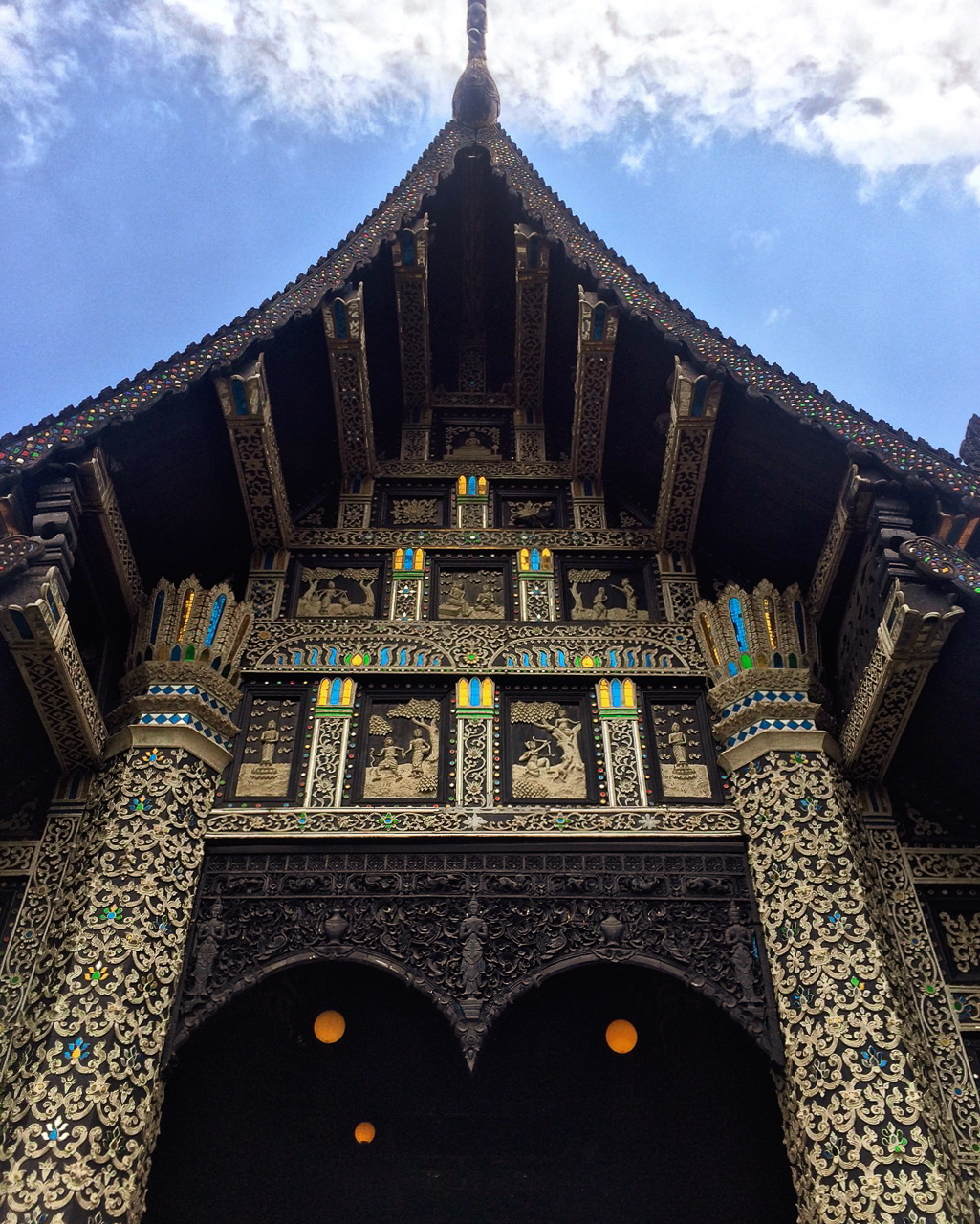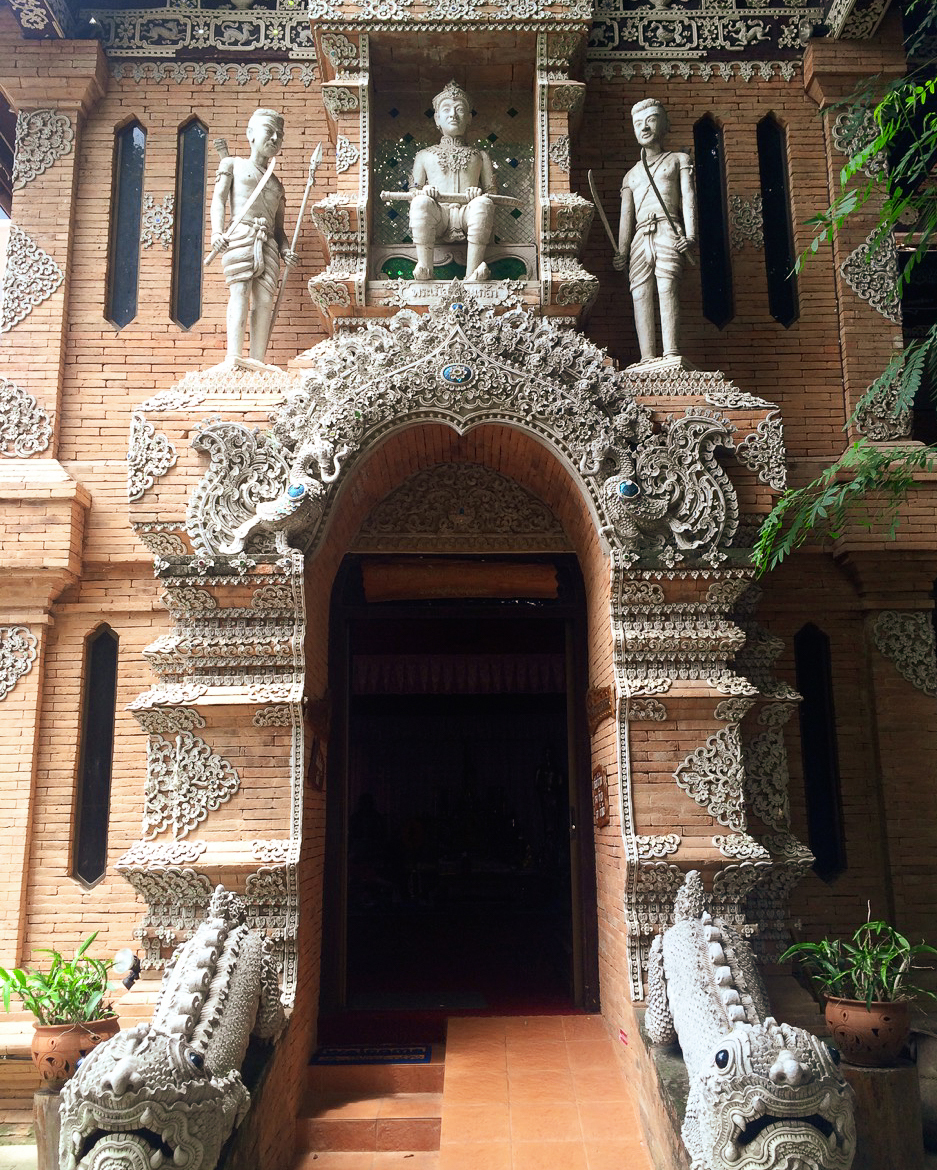After a short stop in Ayutthaya, we went to Chiang Mai - the "northern capital" of Thailand. Chiang Mai is a city of temples, culture, universities, wildlife, national parks and historical sites of the ancient Lanna kingdom. Chiang Mai's atmosphere is more reminiscent of Lao Luang Prabang than Bangkok or the southern cities of Thailand. From the first minutes this city won over and made me want to come back here again and again.
Road
Chiang Mai is located 700 kilometers north of Bangkok. The land can be reached by train or bus. On such long journeys, we usually prefer trains if there is such an option. Trains from Bangkok to Chiang Mai pass through Ayutthaya, from which we left. There are several flights a day, the travel time is 10-12 hours.You can buy a train ticket at the ticket office at the Ayutthaya station (or at the central station in Bangkok), the price depends on the class of the carriage and the speed of the train: from 121 to 1800 baht. Schedules and prices can be viewed on the Thai Railways website.
We bought tickets for the 109 night train in the 2nd Class Fan Sleeper the day before departure, but there was force majeure on our train. The train did not arrive at the appointed time, and it soon became clear that the matter was serious. From the locals, we learned that the train broke down on the way from Bangkok, and it was driven back. And since we had a check-out from the hotel at 12, in the end we had to wait at the station for almost a whole day! Fortunately, the mood was quite positive, and the time flew by pretty quickly.
Ayutthaya station
The reserved seat cards in Thailand are different from the Russians. There are no separate compartments in a reserved seat carriage; seats are located on both sides of the aisle, two per window. During the day, the shelves are assembled, and passengers cannot disassemble them at will, they need a key to unlock them. There are no shelves for luggage, there are only small platforms made of metal tubes in the aisle, on which you can put / strap your bags. In the evening, the conductor comes: dismantles the shelves for sleeping, lays the linen and lowers the shutters on the windows, which are also blocked. At night, the passenger can hide from the aisle with curtains made of fabric.
Platzkart Thai train at night
The conductor is laying the beds, the photo shows the platforms for the luggage
We arrived at Chiang Mai station at about four in the morning. At such an early hour, there were no buses and songteo - a pickup minibus, which is also the most popular public transport in Chinagmai, and we set off from the station on foot. The distance to the historic center is short - about three to four kilometers.
View of the red songteos from the back of another songteo
At this early hour, the streets of the city were quiet and empty, but already began to fill with small groups of Buddhist monks collecting alms. The spectacle is not as massive and colorful as in Luang Prabang, but without a crowd of tourists.
Ritual of the morning offering to the monks
Lodging
The tourist center of Chiang Mai is the Old City, surrounded by the remains of an ancient fortress wall, which houses the main attractions, hotels, cafes, souvenir shops, guesthouses and other tourist attractions.
Fortress wall of the Old City (left)
We are waiting for check-in at the guesthouse
The oldest temple in Chiang Mai, located literally behind the wall of the guesthouse (Wat Chiang Man)
After checking in, during which we were gently steamed tours, which we, according to custom, refused, we were taken to another building on the next street, which turned out to be somewhat unexpected, but not critical. The room was simple, but with everything you need: a private bathroom (a rarity for cheap accommodation in Thailand), a mosquito net over the bed, and even a small balcony. There was no air conditioning, but the room was not very hot due to the proximity of the mountains and frequent rains at this time of the year (late May - early June).
End of May - beginning of the rainy season, heavy rainfalls in the afternoon provided
Rainbow over the central square of the Old Town
Of course, Chiang Mai has accommodation for every budget: from the most basic to luxury hotels and villas for long-term rentals. We chose such a modest option due to the limited travel budget.
Chiang Mai
Chiang Mai is a provincial city, but it is not devoid of individuality and charm. The Old City is strewn with Buddhist temples: with skillful wood and stone carvings, unusual colors, sparkling gilding and simple, historically important and ordinary, small and large.
Streets of the Old Town
Temples on both sides, behind white walls
Monks in bright orange robes walk the streets, black and gray squirrels scurry along the wires, songbirds hide in dense foliage, and mountains turn green on the horizon. There are many handmade paintings and art objects in souvenir shops, you can hang out for hours looking at interesting gizmos.
Terem-teremok (Wat Khuan Khama)
Chiang Mai - the city of temples (Wat Dub Phai)
Wood carving (Wat Lok Molee)
Monks in the Old City
Ancient stupa in the Old City
There are many coffee shops, spas, various courses in the city, and there are no world-famous Thai streets with bars and prostitutes and transvestites at all. Literally a couple of kilometers from the Old Town, a national park begins with a subtropical forest and waterfalls. Chiang Mai is a great place to break the stereotypes about Thailand that are popular with tourists who have visited only southern resorts.
Beautiful sunset, temple and mountains on the horizon
Sunset over one of the main temples of Chiang Mai (Wat Phra Singh)
There is no sea in Chiang Mai, but this does not spoil it at all, and maybe even saves it from the destructive clutches of the mass tourism industry. We stayed in this city for a week in 2014, and then returned on the way back from Pai for a few more days. Later, in 2016, we lived in Chiang Mai for almost a full month, and would gladly return for more.







